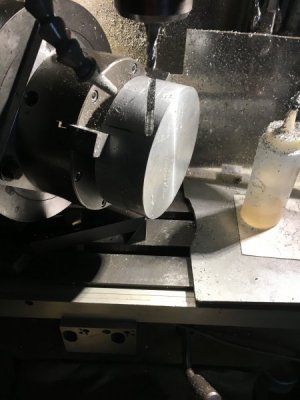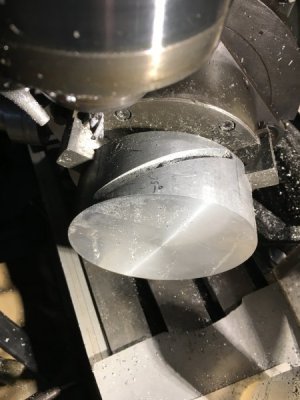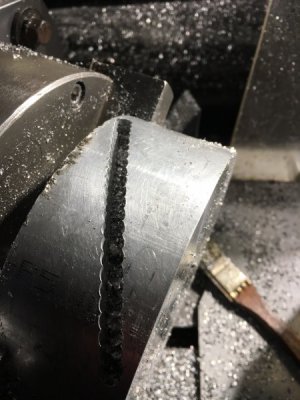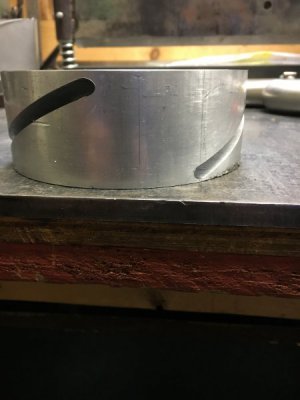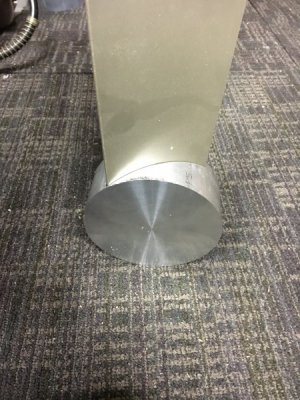I've had a project for awhile that I'm finally trying to get done. I need to make a fan propellar for a ceiling fan. The hub needs to have three slots cut into it at a 25* angle. I have the material and layer it out. The kicker was I made a new backing plate for a 6"chuck to go on my RT to do the job and after trying to set up I can't see how to machine the piece. Here's what I have. 5" diameter 2" thick 25*slots.
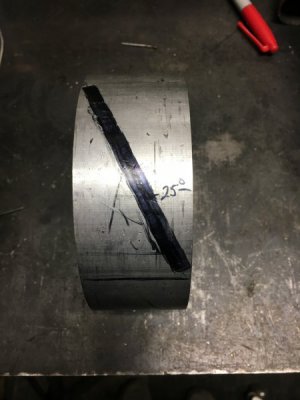
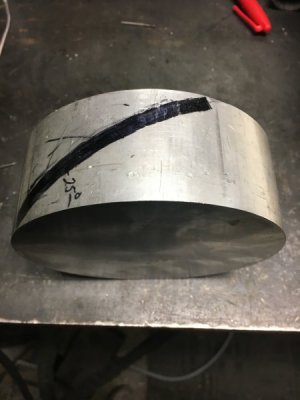
So what I realized after setting up the way I thought to do it was. The piece mounted in the rotary table and the RT at a 25* angle to the table movement does NOT give me the motion to cut the slot. The only way I can see this happening is the table needs to drive the RT somehow. So as the table traverses slowly the RT is turning. Is this right? Can it be done easily? I need some advice please.


So what I realized after setting up the way I thought to do it was. The piece mounted in the rotary table and the RT at a 25* angle to the table movement does NOT give me the motion to cut the slot. The only way I can see this happening is the table needs to drive the RT somehow. So as the table traverses slowly the RT is turning. Is this right? Can it be done easily? I need some advice please.




